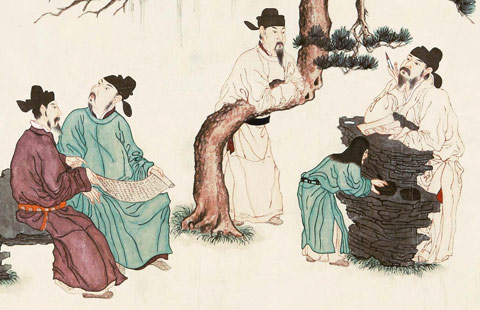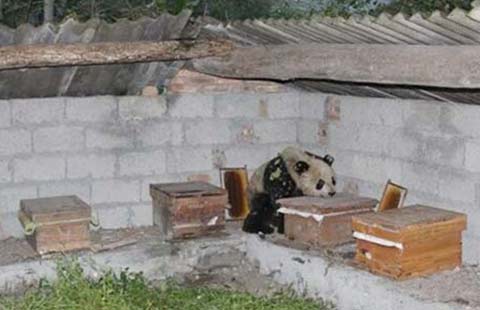China trade with some countries off
Updated: 2015-09-14 05:10
By BRUNA GAMA and CHEN WEIHUA in Rio de Janeiro(China Daily USA)
|
||||||||
 |
|
A freighter that ships Chinese-made train cars at dock at the Dajian Port of Yingkou, northeast China's Liaoning Province, Nov. 25, 2014. More than 300 Chinese-made metro train cars are exported to Brazil by the end of 2014. |
Trade between China and Portuguese-speaking countries fell 24.2 percent in the first seven months of 2015, compared to the same period last year.
According to official Chinese figures released this week, trade between China and eight Portuguese-speaking countries totaled $58.6 billion in the January to July 2015 period.
China’s exports to those countries fell 32 percent to $22.8 billion in the period; imports had a more discrete fall, of 7.4 percent, amounting to $22.8 billion. That means China had a trade deficit of $13 billion with the group from January to July.
Brazil is the leading country in the group, and China-Brazil trade amounts to 72 percent of China’s total trade with Portuguese-speaking countries. Since 2009, China has been Brazil’s largest trade partner, having surpassed the US for the position, and even though trade between the two countries fell six percent in 2014 — reflecting a decrease in the price of commodities in the global market — it continues to be robust and significant to both sides.
In the first seven months of 2015, China-Brazil trade amounted to $42.1 billion, down 18.3 percent from the same period in 2014. Brazil and China signed a number of agreements in May, during Premier Li Keqiang’s visit to South America, so the figures may show an uptick in the coming months.
On the other hand, Brazil’s current political and economic crisis may pose as an obstacle to a trade boost. The government is facing a low approval rating and even calls for an impeachment of President Dilma Rousseff. On its economic front, the 2016 federal budget submitted to the Congress foresees a 30.5 billion real ($7.9 billion) deficit, and credit rating agencies downgraded Brazil’s bonds this week, losing the country its investment grade.
Brazil exports mostly primary products to China, like iron ore, soybeans and oil. The export of meat products, which had suffered an embargo a few years ago, was resumed recently, the announcement also being made during Premier Li’s visit to Brazil in May.
Industrial goods, electronics and equipment make up the bulk of China’s exports to Brazil, followed by chemical products, steel and plastics.
With China’s second-largest Portuguese-speaking trade partner, Angola, trade amounted to $12.4 billion in the January-July 2015 period, down 43 percent from the same period last year.
The African country accounts for 21 percent of Portuguese-speaking countries’ trade with China. Like Brazil, Angola also has China as its largest trade partner, and an important buyer of Angola’s biggest export — oil.
China is actually Africa’s largest trade partner, having surpassed the US in 2009.
Portugal and Mozambique come next. Portugal-China trade fell 6.7 percent in the first seven months of 2015 compared to the same period last year, and amounted to $2.55 billion.
Even though China is increasing its importance among Portugal’s trade partners, it is not the largest, a distinction that belongs to Spain, which shares a large border with the country. As a member of the European Union, Portugal also has strong economic and trade ties with other countries in the bloc, such as France and Germany, and with the US and UK as well.
Mozambique’s trade with China amounted to $1.4 billion in the January to July period. Unlike the other countries, Mozambique registered a significant increase — 30.6 percent — in its trade with China this year, mostly due to a 41.8 percent increase in imports of Chinese products.
China’s trade with the other four Portuguese-speaking countries — Guinea-Bissau, Cape Verde and Sao Tome and Principe, in Africa, and East Timor, in Asia — amounted to $101 million in the January to July 2015 period.
- Russian military experts present in Syria
- Norway PM says Norwegian citizen taken hostage in Syria
- Hungarian TV journalist fired for tripping up fleeing migrants
- Leaders from EU, Russia, Ukraine to meet in Paris in Oct
- Music is food for the soul for young Chinese violinist
- Australia's Tasmania, China agree to 'work together' on Antarctic expeditions

 Americans mark the 14th anniversary of 9/11 attacks
Americans mark the 14th anniversary of 9/11 attacks
 7 ways Chinese travelers benefit from the US visa extension
7 ways Chinese travelers benefit from the US visa extension
 In pictures: School life from the lens of sports teacher
In pictures: School life from the lens of sports teacher
 Ten treasures from Palace Museum to look forward to
Ten treasures from Palace Museum to look forward to
 Top 10 richest Chinese tech giants
Top 10 richest Chinese tech giants
 10 years of Sino-US exhibitions
10 years of Sino-US exhibitions
 Greedy panda eats ten boxes of honey
Greedy panda eats ten boxes of honey
 Soldiers in Sansha guard the islands
Soldiers in Sansha guard the islands
Most Viewed
Editor's Picks

|

|

|

|

|

|
Today's Top News
Over 14,500 Chinese pilgrims in Mecca
Xi's trip to US to 'chart course' for ties
US to accept 10,000 Syrian refugees, says White House
WWII veterans awarded medals for victory efforts
LA still a top destination for tourists even as China's economy slows
New iPhones unveiled
Inside look at Apple's newly-launched products
Peking Opera performance thrills NY
US Weekly

|

|







